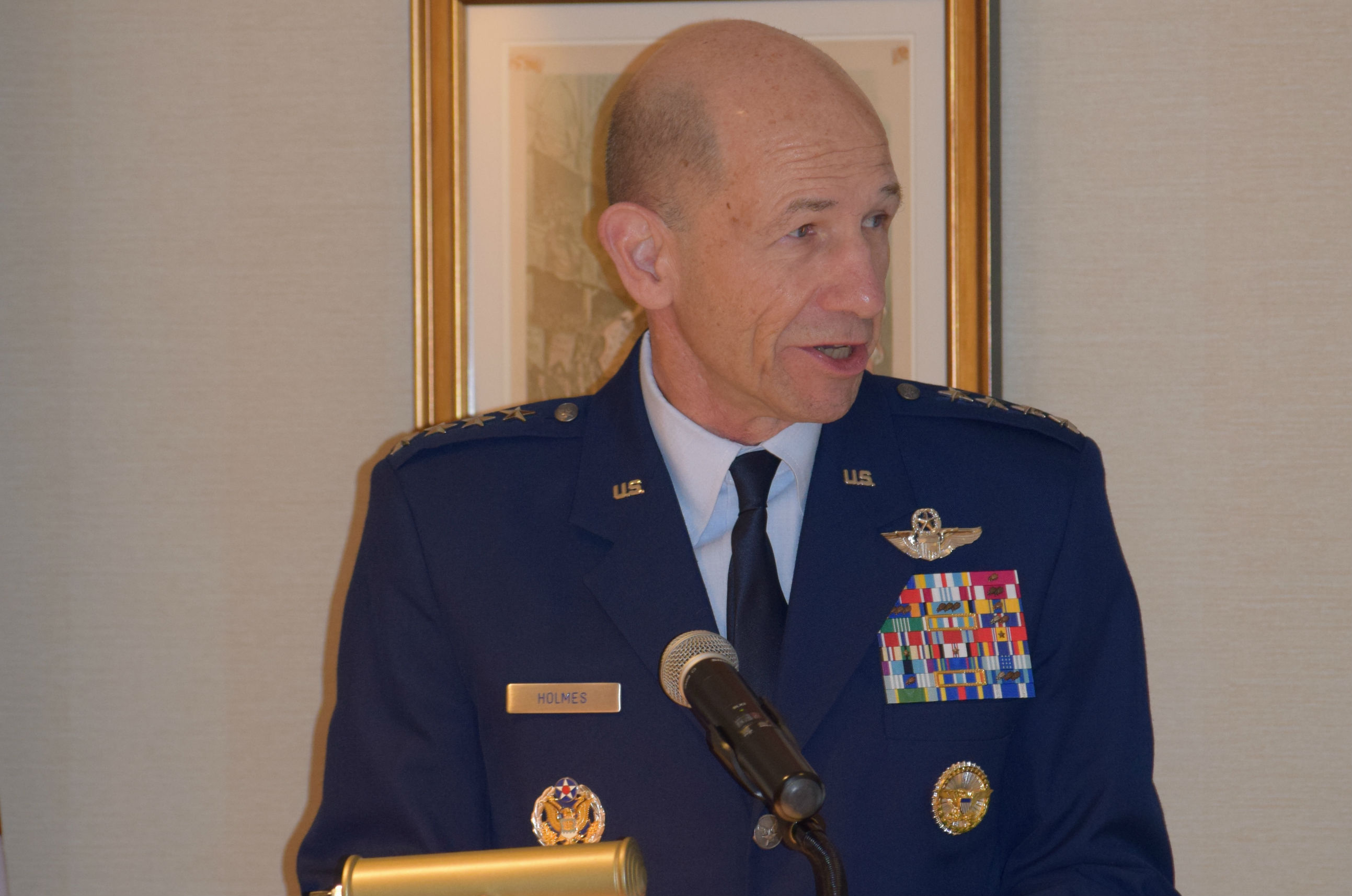
Gen. Mike Holmes, commander of Air Combat Command, speaks at an AFA-sponsored event on Capitol Hill, July 11, 2017. Staff photo by McKinnon Pearse.
Air Combat Command needs “help” on getting the authority to better defend against small drones, because they’re proving to be an increasingly dangerous threat even in peacetime operations, ACC commander Gen. Mike Holmes said Tuesday.
Speaking at an AFA event on Capitol Hill, Holmes said an F-22 on short final at JB Langley-Eustis, Va., last week nearly collided with a large hobbyist drone. The incident was bad enough that the pilot “felt strongly enough to make a report on it.” The same day, Holmes noted, an airman observed a drone “fly over the gate shack, [he] tracked it while it flew over the flightline a while, then…[the drone] left.”
The only defense he has, Holmes said, is a sign identifying the area as “a no-drone zone,” and the authority to pull the license of an operator of one that overflies the base. That assumes he can track the drone to its place of origin and catch the operator, “but they’re hard to get at.” The problem, he said, is “the rules are basically the same as if it was a small civil aircraft,” and he can’t simply shoot one down. Civilian agencies like the FAA need to hurry up and help with the issue, he said.
“We’re working to get authorities for the nuclear sites first,” Holmes noted. In the meantime, “We’re looking at things that can jam the communications” of a drone, to force it to land, as well as “looking at things that let you take control of them, so you can fly them where you want them to go.” Ultimately, “We’re looking at opportunities to shoot them down, too.”
The problem is especially acute for “the ground forces guys … dealing with them every day in Syria.” The drone issue is a “national problem, it’s not just my problem,” Holmes said. “The Air Force will supply resources to go after them but the authority is the big issue.”
He said he understands that drones are “a growing commercial enterprise … we just need to find a way to draw the line, there.” The worst-case scenario is “a world where somebody flies a couple of hundred of those, and flies one down the intake of an aircraft, with just a small weapon.”
